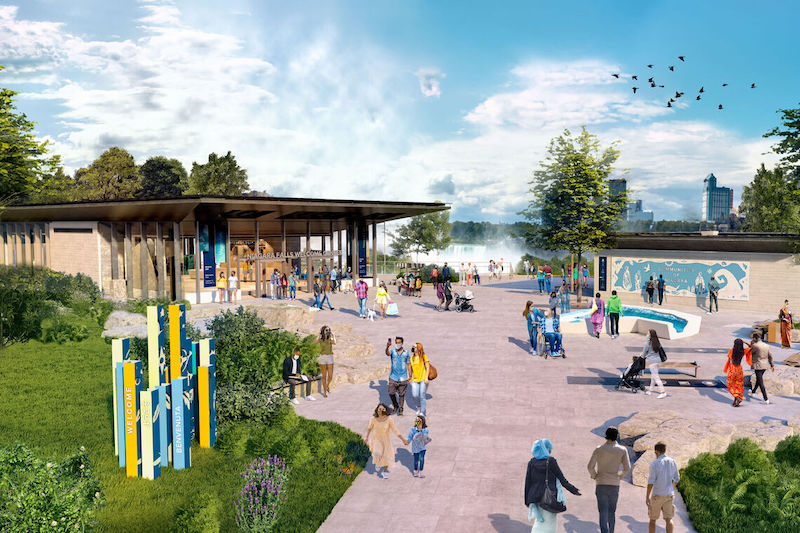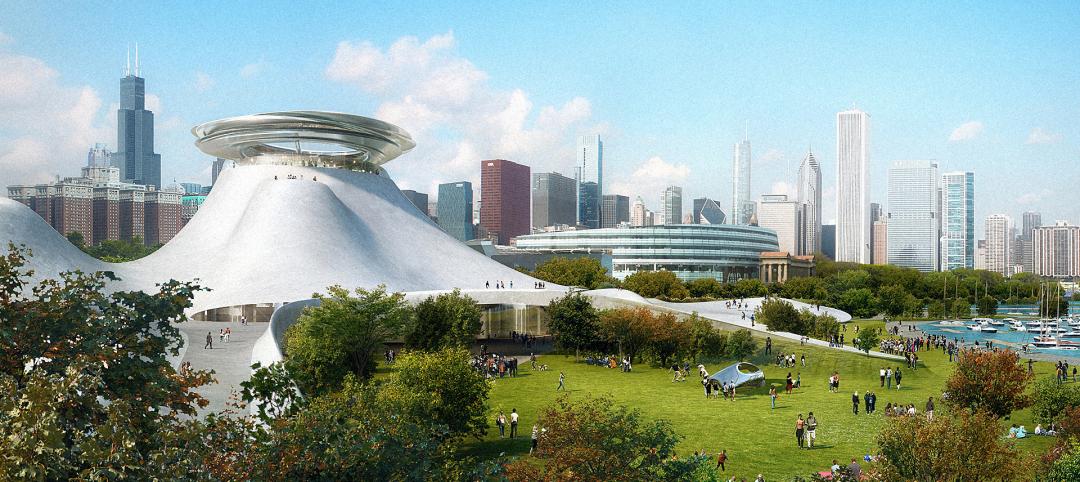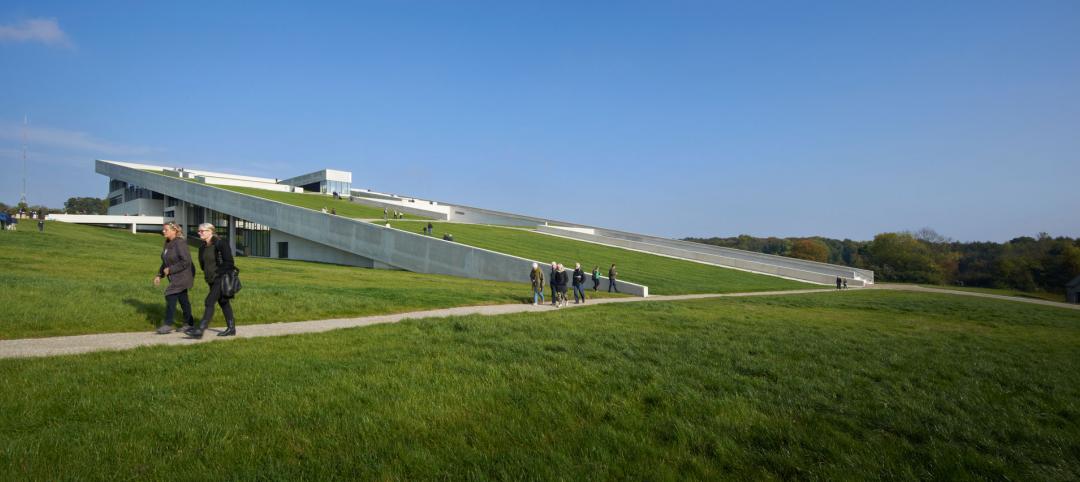The new Niagara Falls Visitor Center, located within Niagara Falls State Park, will offer an immersive experience, both inside the building and out, as it takes visitors on a journey spanning the eras of geological formation and human impacts on the falls and highlighting the flora and fauna of the environs.
Designed by GWWO Architects, the 29,000-sf center will include visitor orientation, a lobby, interactive exhibits, a gift shop, dining, outdoor terraces, and an overlook. The building frames views to the head of the falls and gracefully transitions visitors between the formal entrance gardens in the upper site and the Frederick Law Olmsted- designed landscape of the lower grove.

The expansive glass facade maximizes views and offers continuous connections to the falls throughout the lobby and exhibit areas. The building will be integrated with its site and history via natural materials such as limestone sourced from the Niagara escarpment, wood ceilings, and blackened metal roof and soffit.
The facility’s design will emphasize nature and allow visitors to choose their own path and level of discovery, which will allow for social distancing and crowd control. Outdoor interpretation, dining, and a new accessible path will provide safe spaces for visitors to gather.

The new visitor center will also include sustainable features such as bifacial photovoltaic panels that will be expressed around the perimeter of the roof of the building, with openings in the entrance canopy that will allow them to be viewed from below. Two cisterns will be installed to capture water from the building’s roof to irrigate native plantings on the site.
The Niagara Falls Visitor Center is expected to open in Spring 2023.
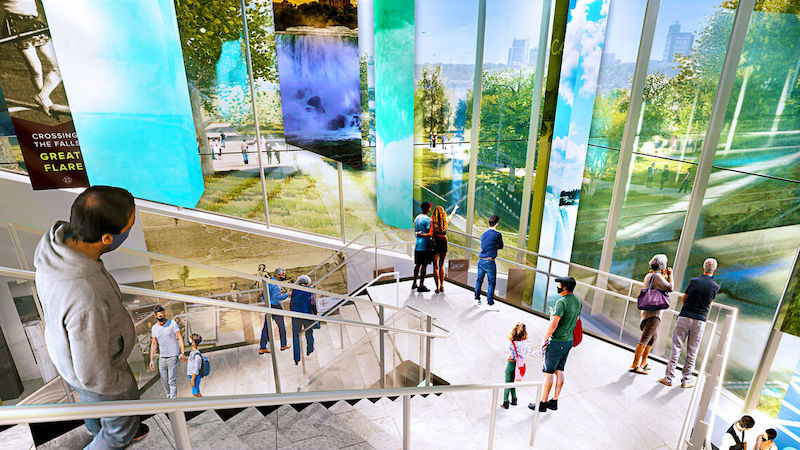
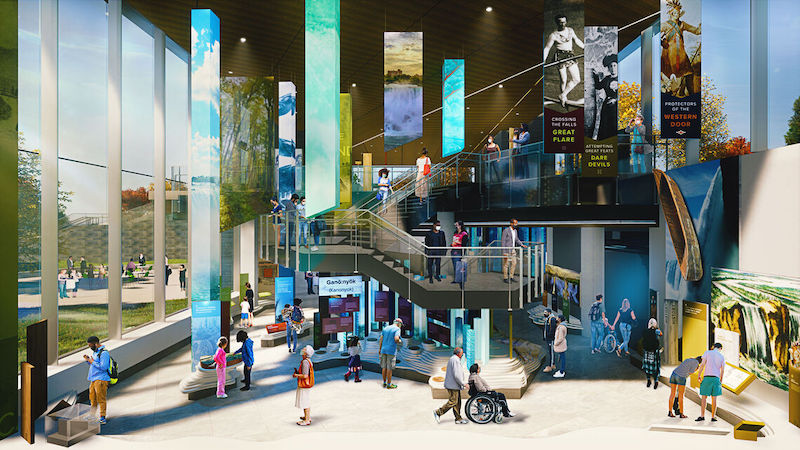

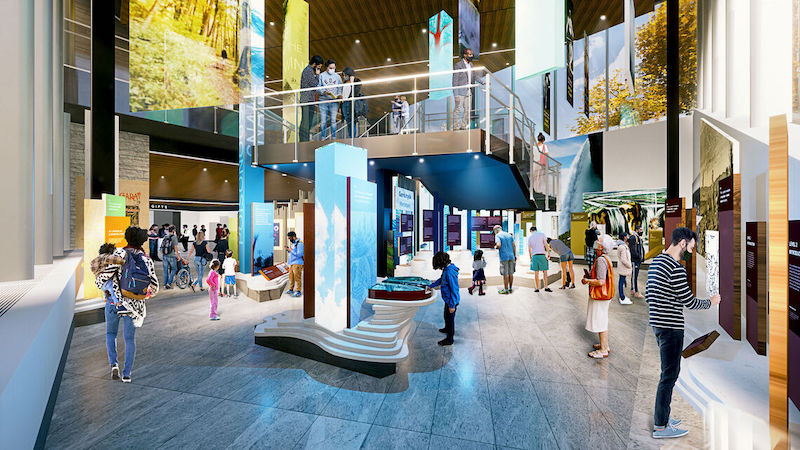
Related Stories
| Nov 14, 2014
Bjarke Ingels unveils master plan for Smithsonian's south mall campus
The centerpiece of the proposed plan is the revitalization of the iconic Smithsonian castle.
| Nov 12, 2014
Chesapeake Bay Foundation completes uber-green Brock Environmental Center, targets Living Building certification
More than a decade after opening its groundbreaking Philip Merrill Environmental Center, the group is back at it with a structure designed to be net-zero water, net-zero energy, and net-zero waste.
| Nov 7, 2014
NORD Architects releases renderings for Marine Education Center in Sweden
The education center will be set in a landscape that includes small ponds and plantings intended to mimic an assortment of marine ecologies and create “an engaging learning landscape” for visitors to experience nature hands-on.
| Nov 5, 2014
The architects behind George Lucas' planned Chicago museum unveil 'futuristic pyramid'
Preliminary designs for the $300 million George Lucas Museum of Narrative Art have been unveiled, and it looks like a futuristic, curvy pyramid.
| Nov 3, 2014
IIT names winners of inaugural Mies Crown Hall Americas Prize
Herzog & de Meuron's iconic 1111 Lincoln Road parking garage in Miami Beach, Fla., is one of two winners of the $50,000 architectural prize.
| Oct 29, 2014
Diller Scofidio + Renfro selected to design Olympic Museum in Colorado Springs
The museum is slated for an early 2018 completion, and will include a hall of fame, theater, retail space, and a 20,000-sf hall that will showcase the history of the Olympics and Paralympics.
| Oct 23, 2014
Prehistory museum's slanted roof mimics archaeological excavation [slideshow]
Mimicking the unearthing of archaeological sites, Henning Larsen Architects' recently opened Moesgaard Museum in Denmark has a planted roof that slopes upward out of the landscape.
| Oct 16, 2014
Perkins+Will white paper examines alternatives to flame retardant building materials
The white paper includes a list of 193 flame retardants, including 29 discovered in building and household products, 50 found in the indoor environment, and 33 in human blood, milk, and tissues.
| Oct 15, 2014
Harvard launches ‘design-centric’ center for green buildings and cities
The impetus behind Harvard's Center for Green Buildings and Cities is what the design school’s dean, Mohsen Mostafavi, describes as a “rapidly urbanizing global economy,” in which cities are building new structures “on a massive scale.”
| Oct 12, 2014
AIA 2030 commitment: Five years on, are we any closer to net-zero?
This year marks the fifth anniversary of the American Institute of Architects’ effort to have architecture firms voluntarily pledge net-zero energy design for all their buildings by 2030.


